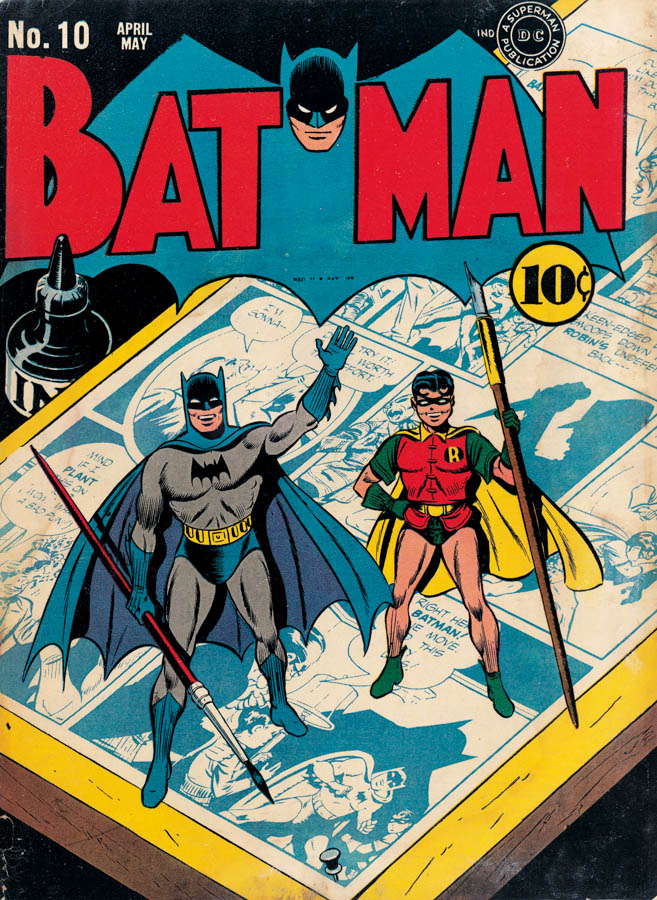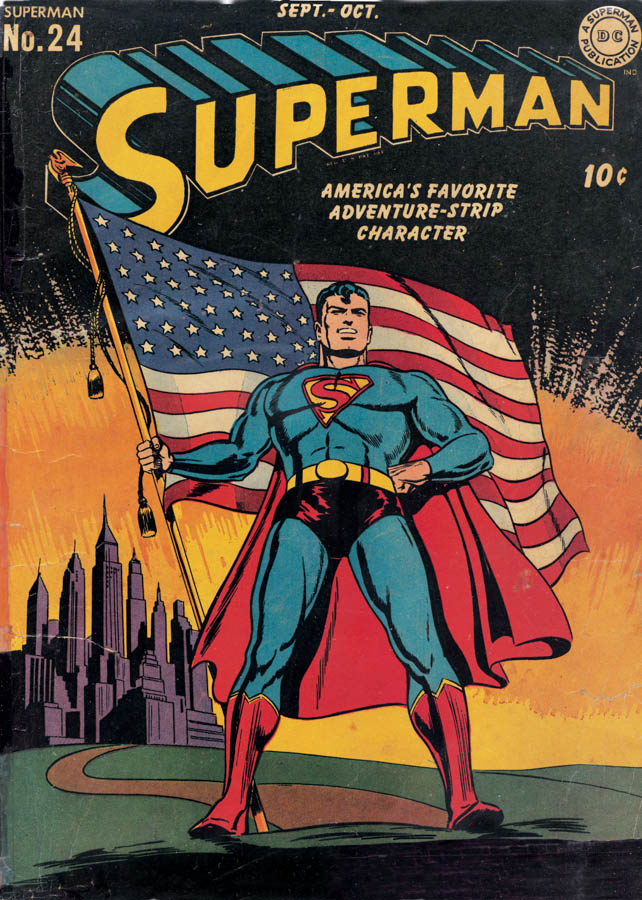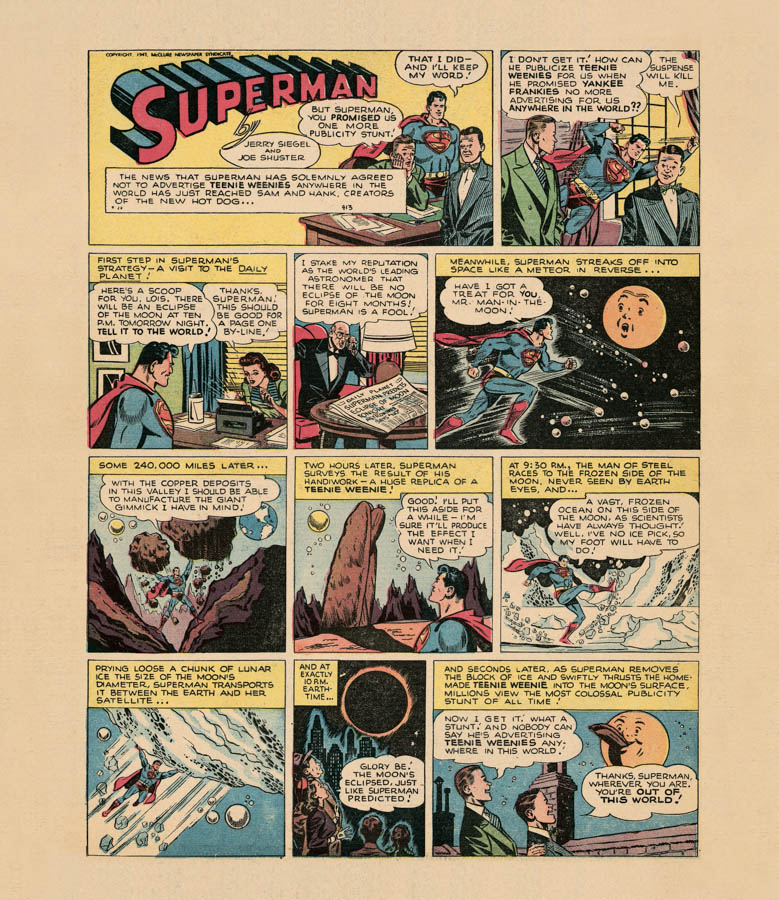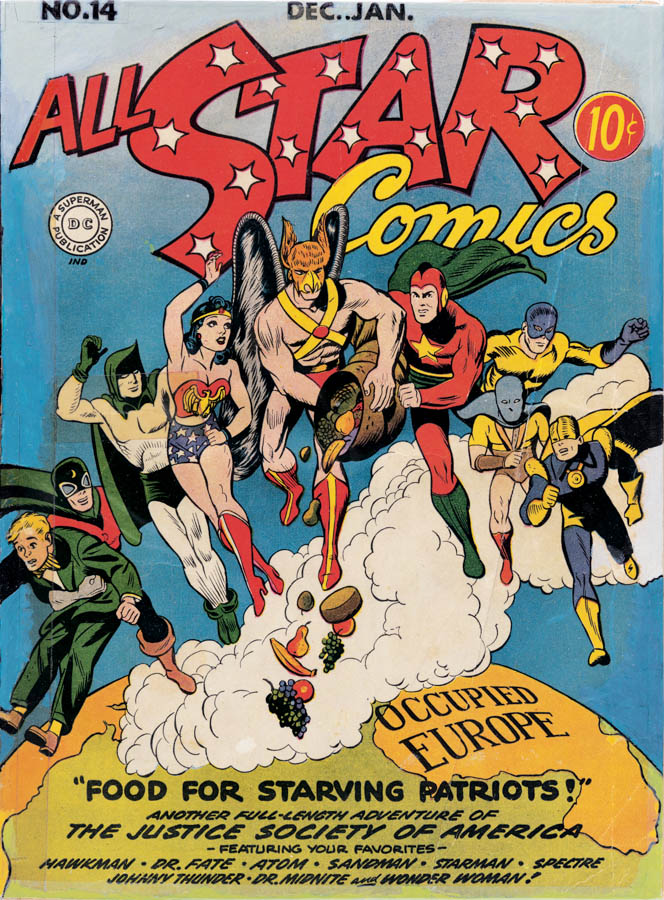The Golden Age of DC Comics 1935-1956
A long time before the low budget TV shows, the CGI blockbusters and the money spinning Hollywood franchises, there was the iconic, four-colour separation comic book, in black, magenta, yellow and cyan.
The birth of the superhero in American popular culture went hand in hand with massive socioeconomic turmoil. When Superman first appeared on the cover of Action Comics in 1938, the US was still suffering from the Great Depression.
A new book by Taschen – The Golden Age of DC Comics 1935-1956 – is a definitive look at the development of a new popular entertainment and art form and the drama behind the scenes of the birth of the superhero. It presents a vivid, colourful historical document of a unique time in American history, including the reaction by key figures in the development of the DC superhero to the anti-Semitism of the time: Bob Kahn changed his name to Bob Kane, and Jacob Kurtzburg changed his to Jack Kirby, while they gave their characters “everyman” all-American names.
The book also captures the glory days of radio; the optimism of the World’s Fair; America’s involvement in the war – as told by mythical characters sporting red, white and blue and stars and stripes – and the MacCarthy era of the 1950s, which would see comic books burnt alongside the hysteria of the Communist witch hunts.

From Taschen's The Golden Age of DC Comics 1935-1956: Cover art from 1942 by Fred Ray and Jerry Robinson. Bob Kane created Batman in 1939. The new character chimed well with the times, with the film noir era just around the corner.

From Taschen's The Golden Age of DC Comics 1935-1956: Cover art by Jack Burnley from 1943. Superman had a complex role in World War II - he couldn't be portrayed as the means to end conflict without insulting the American forces. But his role was instrumental in propoganda. The Times Literary Supplement reported in 1953: "Comics did more to unite and steel America for war than President Roosevelt's speeches."

From Taschen's The Golden Age of DC Comics 1935-1956: A Sunday newspaper Superman strip, drawn by Wayne Boring, 1947.

From Taschen's The Golden Age of DC Comics 1935-1956: Cover art by Joe Gallagher, 1942. Hunger is rampant in areas of war-ravaged Europe, so the Justice League distribute capsules that expand into a full meal when treated with a special solution.


